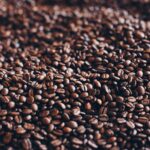‘A knowledge of the chemical composition of foods is the first essential in the dietary treatment of disease or in any quantitative study of human nutrition’ – (McCance & Widdowson, 1940)
McCance and Widdowson’s The Composition of Foods integrated dataset is the official UK national food composition database, providing comprehensive macronutrient and micronutrient profiles of more than 3000 most commonly consumed food and recipes in the UK. Since 1978, researchers at the Food & Nutrition-NBRI have taken on the responsibility of producing and managing data for the UK food composition dataset. Throughout the years, numerous analytical surveys have been conducted to update the dataset, resulting in the release of several hardcopy versions, including McCance and Widdowson’s The Composition of Foods 5th (1991), 6th (2002) 7th (2014) editions along with 12 supplements. Additionally, the electronic version of the dataset, which brings together all the data from the Composition of Foods series of publications, has been freely available since 2008.
This extensive repository of data is accessible in various formats, catering to a diverse array of user requirements.
- The Composition of foods integrated dataset (CoFID) provides nutrient values for a range of commonly consumed foods and recipes in the UK. This is the complete version of the dataset that reflects all compositional updates as they occur. The most recent update occurred in 2021. The data is presented in two formats:
- Downloadable excel: An Excel file containing all foods and their nutrient composition, suitable for users who wish to access, collect, and compare the nutritional values for multiple foods. This file can be downloaded from Composition of foods integrated dataset (CoFID) – GOV.UK (www.gov.uk)
- Searchable website: The website hosts the same information as the Excel file and is targeted at users who wish to quickly search the dataset for the nutritional composition of individual foods. The website can be accessed via the following link: Homepage – Food & Nutrition – National Bioscience Research Infrastructure (quadram.ac.uk)
The McCance and Widdowson 7th edition book, last published in 2015, contains a subset of data from the CoFID 2015 version, excluding values for fatty acid fractions, vitamin fractions, phytosterols, and organic acids. It includes data updates from 12 analytical surveys since the publication of the sixth edition in 2002. Both the hardcopy and eBook versions are available for purchase from McCance and Widdowson’s: The Composition of Foods | Books Gateway | Royal Society of Chemistry (rsc.org)


Labelling dataset To assist food manufacturers, dietitians, nutritionists, software or app producers in generating the mandatory EU nutrition information for food products and recipes, the COFID dataset has been adjusted by supplementing missing values and recalculating specific nutrients to ensure adherence to labelling regulations. For more information and to download the dataset, please visit Food Labelling | Food & Nutrition: National Bioscience Research Infrastructure (quadram.ac.uk)
HOW TO CITE THE DATASETS
- CoFID website searchable version: FN-BRI formally known as FDNC (Food Databanks National Capability) (2021), extended dataset based on PHE’s McCance and Widdowson’s Composition of Foods Integrated Dataset. Available at: https://quadram.ac.uk/UKfoodcomposition/ (accessed day/month/year)
- Composition of Foods integrated dataset excel version: PHE (Public Health England) (2021) Composition of foods integrated dataset (CoFID). Available at: https://www.gov.uk/government/publications/composition-of-foods-integrated-dataset-cofid (accessed day/month/year).
- McCance and Widdowson 7th edition book: Finglas PM, Roe M, Pinchen H et al. (2015) McCance and Widdowson’s The Composition of Foods, Seventh Summary Edition. Royal Society of Chemistry: Cambridge.
- Labelling dataset used for food labelling: UK Composition of Foods Labelling dataset (2021), H Pinchen, L Zhang, M Roe, S Church, M Traka, P Finglas. Available at https://fnnbri.quadram.ac.uk/labelling/ (accessed day/month/year)
Analytical Surveys for CoFID updates
Analytical surveys are projects aimed at revising the nutrient information for specific foods in light of market changes, shifts in dietary habits among people, and other factors that could potentially influence the nutrient compositions of foods. This work has been funded by BBSRC via the National Capability and successive grants from various government bodies including Food Standards Agency and the Department of Health and Social Care.
Results from all previous analytical surveys have been integrated into the latest CoFID datasets.
- Report on nutrient analysis of key cuts of pork 2020
- Nutrient analysis of fruits and vegetables 2017
- Nutrient analysis of fruit and vegetables 2013
- Nutrient analysis of eggs (revised version) 2013
- Nutrient analysis of fish and fish products 2013
- Nutrient analysis of a range of processed foods with particular reference to trans fatty acids (revised version) 2013
- Nutrient analysis of eggs 2012
- Nutrient analysis survey of biscuits, buns, cakes and pastries 2011
The work involves close cooperation with researchers and other users of the data including academics, dietitians, and the National Diet & Nutrition Survey team, led by MRC Epidemiology Unit Department, University of Cambridge. Closer cooperation with industry has also been a theme of more recent data updates on eggs, pork (AHDB) and milk (Dairy UK). We work closely with international food composition database compilers in Europe through EuroFIR (www.eurofir.org) especially dealing with data standardisation, quality and interoperability as well as compilers from outside Europe (e.g. USDA, Australia/New Zealand, South Africa) through FAO INFOODS.
Future data updates are likely to focus on some of the older food data for beef/lamb, chicken/turkey, dairy products as well as adding data for newly emerging plant-based alternative products.
Copies of earlier analytical reports completed since the 1980s (MW4 onwards) can be requested by emailing FN-NBRI@quadram.ac.uk.
ADDITIONAL INFORMATION AND TOOLS
UK Composition of Foods Integrated Dataset (CoFID) in excel
The ‘Composition of Foods Integrated Dataset’ (CoFID) was first published in 2008, and brought together for the first time all the available data in electronic format as a single, consolidated, dataset. It was updated in 2015 and more recently in 2021. The CoFID lists analytical nutrient data for 2,887 foods, with a further 393 in the ‘old foods’ file. The data are divided across 13 worksheets, and include nutrient data for:
- macronutrients
- vitamins
- vitamin fractions
- minerals
- fatty acid fractions
- phytosterols
- organic acids
UK Composition of foods interfrated dataset (CoFID) searchable website
The searchable website for CoFID was commissioned following feedback from users, particularly the general public, who requested a way of easily accessing nutritional information for particular foods. Prior to the launch of the tool, users needed to download and manually search through the full Excel dataset. The new web tool allows users to enter search terms related to the food of interest and the website returns a list of relevant foods, showing the food code, name and key nutrient values (energy, fat, water, carbohydrates, sugars, protein). Clicking on an item from the list opens a detailed page for the food giving all the available nutrient values.
The individual food page also includes comments on key nutrient values, such as the origin of the data, and is the first time that this information has been available to the end user. This function is particularly useful for researchers, academics and clinicians who may need to assess how suitable the values are for their intended use.
McCance and Widdowson’s The Composition of Foods
McCance and Widdowson’s (eds.) The Composition of Foods (7th edn.; MW7) provides nutrient values for a range of commonly consumed foods in the UK. Since the publication of the sixth edition in 2002, 12 analytical surveys have been undertaken. MW7 includes the majority of the new data from these surveys. In addition to new analytical values, all foods have been reviewed to check that the values are representative of foods currently consumed. Many processed foods have been reformulated to reduce the content of salt, sugar and fat in line with government public health initiatives and, where necessary, values have been updated with industry to reflect those changes in composition. Values for a wide range of nutrients (e.g. proximates, inorganics, vitamins, fibre and fatty acids) are provided and additional tables provide data for carotenoid fractions, vitamin E fractions and vitamin K for selected foods. AOAC fibre values have been included for a wide range of foods to enable energy calculations, including fibre for food labelling purposes.
For the younger generation, children might enjoy watching Absolute Genius about Elsie Widdowson and the Composition of Foods : https://www.youtube.com/watch?v=AFsIHG_7Ir4
Publications
- M.H.Traka, J.Plumb, R.Berry, H.Pinchen, P.M.Finglas. Maintaining and updating food composition datasets for multiple users and novel technologies: Current challenges from a UK perspective 2020
- H.Pinchen, S.Church, M.Strong, L.Dimmack, N.Powell, G.Swan, P.Finglas. Nutrient content of key cuts of pork in the UK. 2020
- Julie Hannah, Mark Roe, Marisol Warthon-Medina, Hannah Pinchen, MAria Barrett, Sue Perry. Phosphorus in Food: Limitations of food composition data 2018
- Roe, M., Pinchen, H., Church, S., Elahi, S., Walker, M., Farron-Wilson, M., Buttriss, J. and Finglas, P. (2012) Trans fatty acids in a range of UK processed foods. Food Chemistry. 2012
FoodEXplorer
The EuroFIR FoodEXplorer facility is an innovative interface, which can be accessed online and allows its users the simultaneous search of more than 20 standardised and specialised food composition databases (FCDB). Users have access to a wide range of European data, linking foods and nutrients through harmonised data description and associated nutrient value information.
The search facilities include options to search on food name, food description and a combination of food name and food description as well as the powerful and unique ability to compare the component values between foods from European FCDBs. Outputs can be downloaded as spreadsheets, allowing the user to manage the data as required. The FCDBs linked with EuroFIR use standardised food description (LanguaL) and standardised component and value description through the use of thesauri (standard vocabularies) to achieve a fully standardised approach linking between data in the various European FCDBs.







